The AMD Radeon VII Review: An Unexpected Shot At The High-End
by Nate Oh on February 7, 2019 9:00 AM ESTRadeon VII & Radeon RX Vega 64 Clock-for-Clock Performance
With the variety of changes from the Vega 10 powered RX Vega 64 to the new Radeon VII and its Vega 20 GPU, we wanted to take a look at performance and compute while controlling for clockspeeds. In this way, we can peek at any substantial improvements or differences in pseudo-IPC. There's a couple caveats here; obviously, because the RX Vega 64 has 64 CUs while the Radeon VII has only 60 CUs, the comparison is already not exact. The other thing is that "IPC" is not the exact metric measured here, but more so how much graphics/compute work is done per clock cycle and how that might translate to performance. Isoclock GPU comparisons tend to be less useful when comparing across generations and architectures, as like in Vega designers often design to add pipeline stages to enable higher clockspeeds, but at the cost of reducing work done per cycle and usually also increasing latency.
For our purposes, the incremental nature of 2nd generation Vega allays some of those concerns, though unfortunately, Wattman was unable to downclock memory at this time, so we couldn't get a set of datapoints for when both cards are configured for comparable memory bandwidth. While the Vega GPU boost mechanics means there's not a static pinned clockspeed, both cards were set to 1500MHz, and both fluctuated from 1490 to 1500MHZ depending on workload. All combined, this means that these results should be taken as approximations and lacking granularity, but are useful in spotting significant increases or decreases. This also means that interpreting the results is trickier, but at a high level, if the Radeon VII outperforms the RX Vega 64 at a given non-memory bound workload, then we can assume meaningful 'work per cycle' enhancements relatively decoupled from CU count.
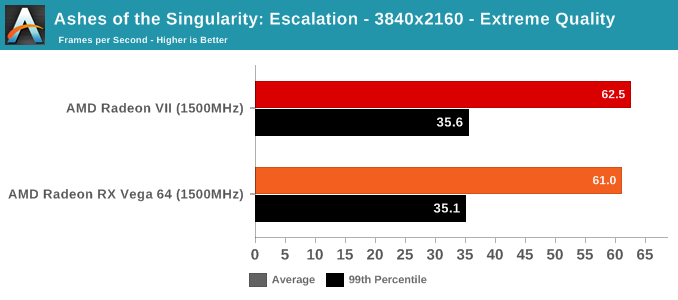
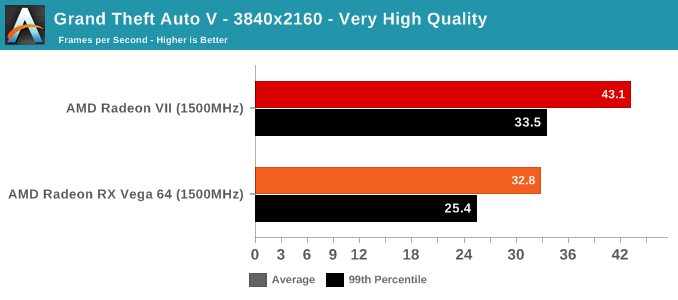

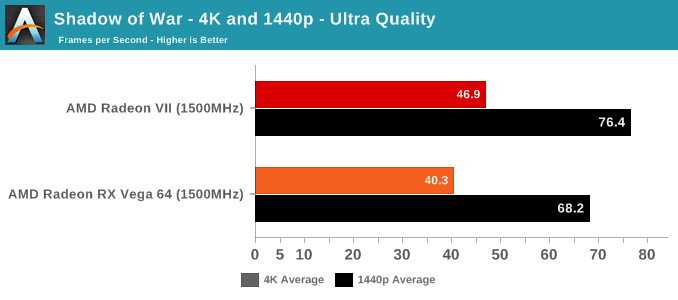
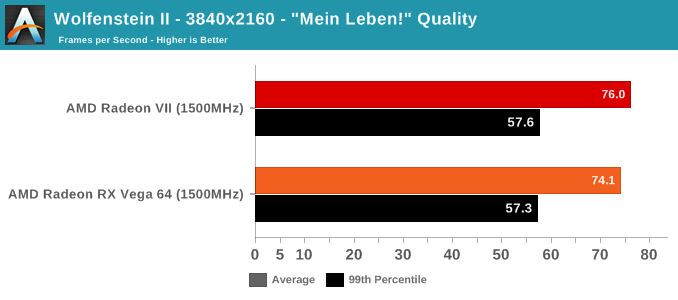
As mentioned above, we were not able to control for the doubled memory bandwidth. But in terms of gaming, the only unexpected result is with GTA V. As an outlier, it's less likely to be an indication of increased gaming 'work per cycle,' and more likely to be related to driver optimization and memory bandwidth increases. GTA V has historically been a title where AMD hardware don't reach the expected level of performance, so regardless there's been room for driver improvement.

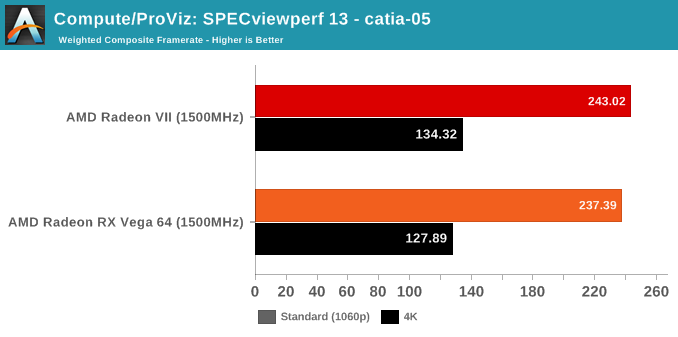
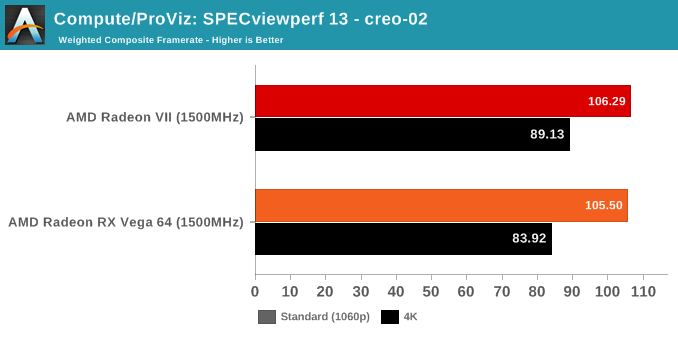
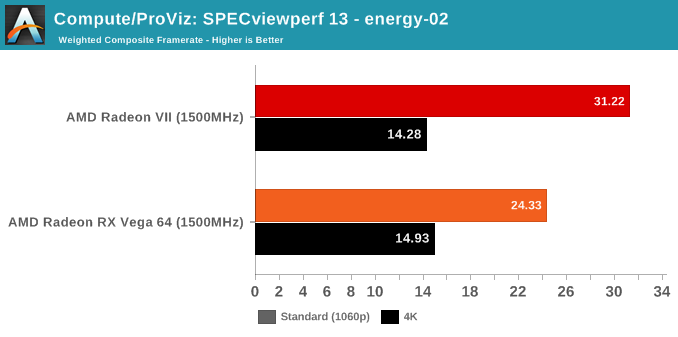
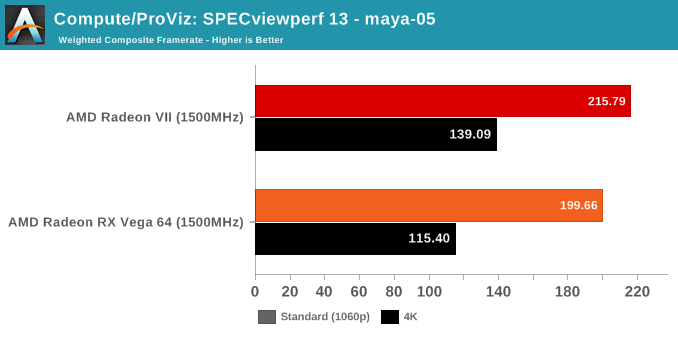
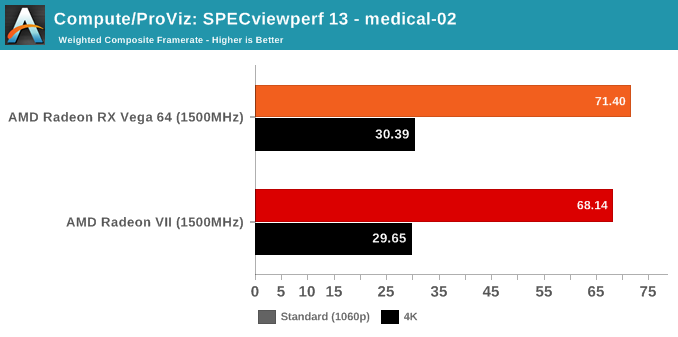


SPECviewperf is a slightly different story, though.
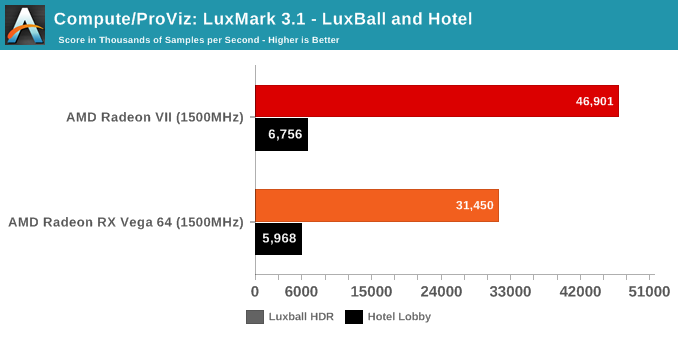
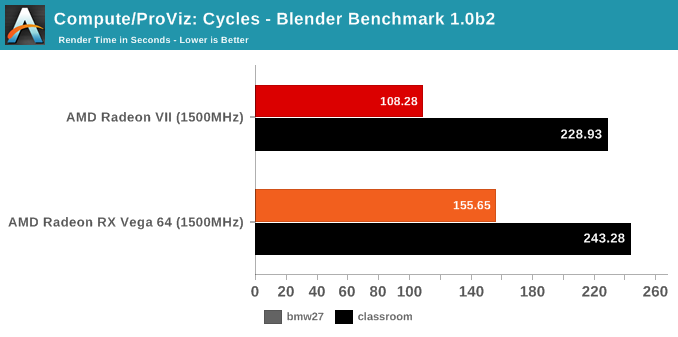
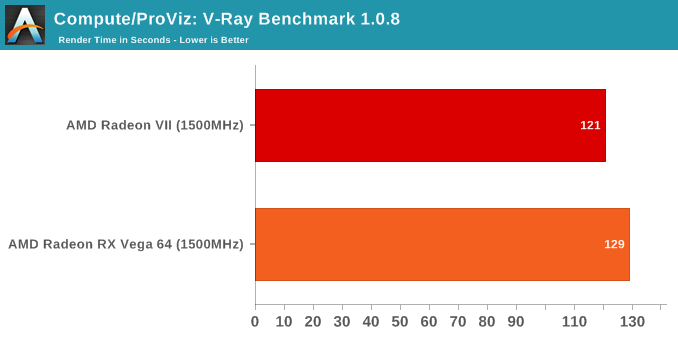
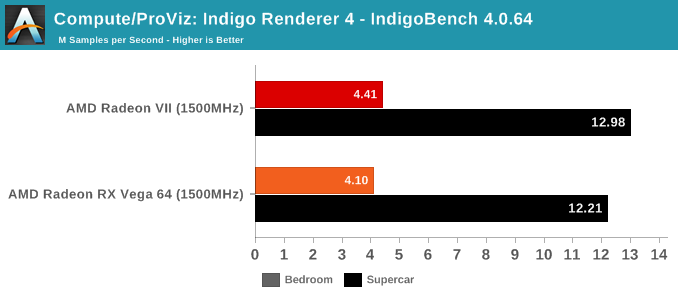










289 Comments
View All Comments
mapesdhs - Friday, February 8, 2019 - link
It's going to be hillariously funny if Ryzen 3000 series reverses this accepted norm. :)mkaibear - Saturday, February 9, 2019 - link
I'd not be surprised - given anandtech's love for AMD (take a look at the "best gaming CPUs" article released today...)Not really "hilariously funny", though. More "logical and methodical"
thesavvymage - Thursday, February 7, 2019 - link
It's not like itll perform any better though... Intel still has generally better gaming performance. There's no reason to artificially hamstring the card, as it introduces a CPU bottleneckbrokerdavelhr - Thursday, February 7, 2019 - link
Once again - in gaming for the most part....try again with other apps and their is a marked difference. Many of which are in AMD's favor. try again.....jordanclock - Thursday, February 7, 2019 - link
In every scenario that is worth testing a VIDEO CARD, Intel CPUs offer the best performance.ballsystemlord - Thursday, February 7, 2019 - link
There choice of processor is kind of strange. An 8-core Intel on *plain* 14nm, now 2! years old, with rather low clocks at 4.3Ghz, is not ideal for a gaming setup. I would have used a 9900K or 2700X personally[1].For a content creator I'd be using a Threadripper or similar.
Re-testing would be an undertaking for AT though. Probably too much to ask. Maybe next time they'll choose some saner processor.
[1] 9900K is 4.7Ghz all cores. The 2700X runs at 4.0Ghz turbo, so you'd loose frequency, but then you could use faster RAM.
For citations see:
https://www.intel.com/content/www/us/en/products/p...
https://images.anandtech.com/doci/12625/2nd%20Gen%...
https://images.anandtech.com/doci/13400/9thGenTurb...
ToTTenTranz - Thursday, February 7, 2019 - link
Page 3 table:- The MI50 uses a Vega 20, not a Vega 10.
Ryan Smith - Thursday, February 7, 2019 - link
Thanks!FreckledTrout - Thursday, February 7, 2019 - link
I wonder why this card absolutely dominates in the "LuxMark 3.1 - LuxBall and Hotel" HDR test? Its pulling in numbers 1.7x higher than the RTX 2080 on that test. That's a funky outlier.Targon - Thursday, February 7, 2019 - link
How much video memory is used? That is the key. Since many games and benchmarks are set up to test with a fairly low amount of video memory being needed(so those 3GB 1050 cards can run the test), what happens when you try to load 10-15GB into video memory for rendering? Cards with 8GB and under(the majority) will suddenly look a lot slower in comparison.